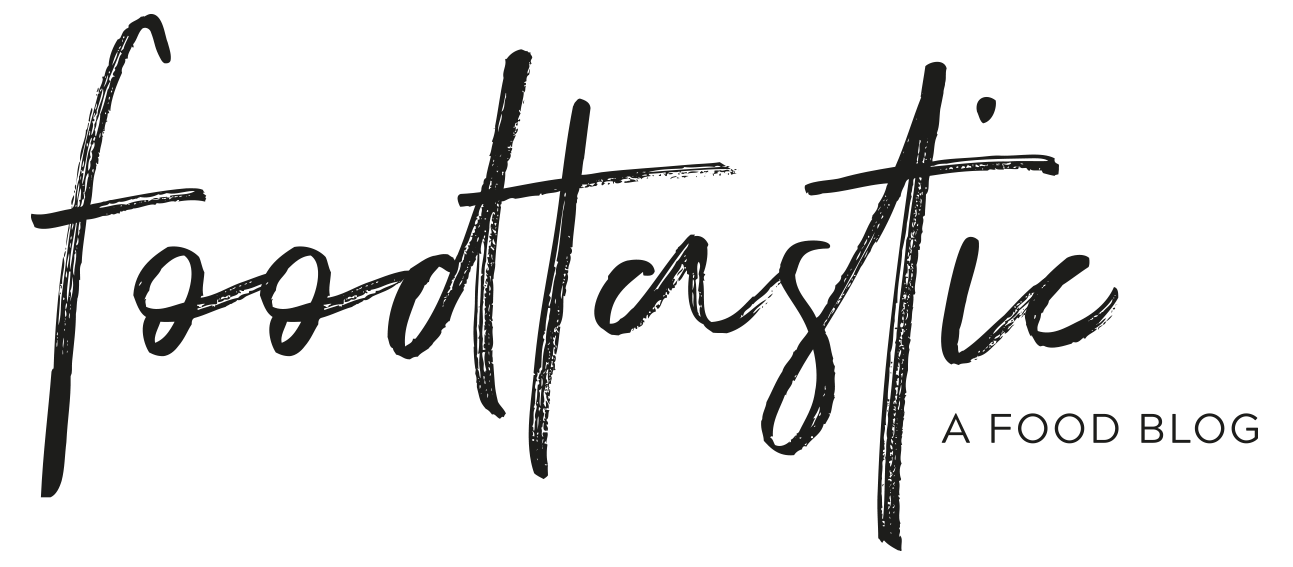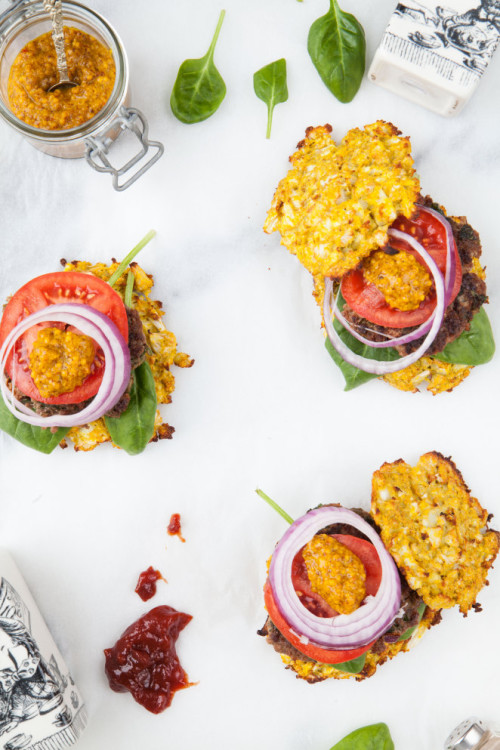Paleo Burger with Cauliflower Buns
In my last post, I talked a little bit about the Low Carb thing. This time, I'll focus on the paleo or caveman diet. Around two weeks ago, I was at the Allergy & Free From expo in Berlin and came across the amazing Eat Performance booth, exclusively offering paleo products. As the paleo diet is grain-free, it is naturally gluten-free and mostly low carb, so ideal for my needs. I tasted a heavenly luscious banana-vanilla cake made with tapioca flour and was particularly fascinated by the large variety of flour alternatives and how creative cooking and baking can be.
Tapioca flour, the main ingredient in the delicious cake I ate, is a product made from the cassava root and is very popular in Africa and South America, where it is a basic dietary staple, not unlike the potato in the western world (it is similarly prepared). The cassava's starchy root tuber is its nutritional secret, tapioca flour its ground end result. In order to produce tapioca flour, the tubers are washed, peeled, grated and packed into sacks where they are allowed to dry and ferment for days. This produces a light-coloured powder that can be turned into porridge by adding water. In Africa and South America, fresh produce and spices are added to it for nutrition and flavour. Tapioca flour or Garri, the indigenous name for it, isn't a classic flour substitute for bread and most baked goods because the protein content is too low to turn them crispy and fluffy, but it can be mixed with other types of flour like wheat or gluten-free flour. On its own, it works well for flatbreads and some cakes - an ideal alternative to flour for those on a gluten-free diet.
But more about the paleo diet. What is it and what does it include/exclude?
The paleo diet is based on what our ancestors, the hunters and gatherers of the paleolithic era, were thought to have eaten: the produce they found and the animals they hunted - meat, fish, sea food, vegetables, fruit and nuts. There was no sugar, no preservatives, no artificial flavours or additives. There was no grain production either, making the paleo diet ideal for coeliac patients.
Of course opinions on this diet vary and many advantages and disadvantages are being discussed.
But its rejection of grains and legumes has proven useful in the battle against auto-immune and metabolic diseases like multiple sclerosis and diabetes. Of course in paleolithic times, the goal wasn't a healthy diet but pure survival. Also, agriculture and the breeding of livestock is now believed to have started around the neolithic period.
Dustin from the Eat Performance booth at the Allergy & Free From expo explained that a paleo-like diet results in more energy, elevated fitness and steadier blood sugar levels.
In addition, "paleo" sees a wide variety of approaches. Many followers do not strictly obey the very limited (and often uncooked) paleolithic meal range but instead creatively invent recipes inspired by the basic principles of the diet. In the paleolithic, no one would have baked a cake with tapioca flour or made burgers with cauliflower-egg and coconut flour buns. I tried them and am now a fan of the cauliflower burger. The yellow colour of the buns was achieved through a generous helping of turmeric. Initially, I served the burgers with grilled pineapple - but the result was a bit unfortunate, I'm sad to say. Investigating further, I found those amazing cauliflower buns on the A boy from stoneage blog. They are similar in preparation to my cauliflower pizza, except with coconut flour instead of cheese, which is much better for our digestion. A good idea is to drink 1/2 teaspoon of coconut flour mixed into water. Daily.
It's not just the paleo diet that keeps us healthy though, but also the cauliflower itself. Rich in vitamins C and B as well as folic acid and potassium, it's a nutritious and satisfying treat at only 24kcal per 100g.
Paleo Burger with Cauliflower Buns
Ingredients:
For the patties:
- About 250-300g of minced beef
- 2 TBSP capers
- 1 red onion
- 1 pinch of chilli powder
- ½ bunch of parsley
- 2 tsp mustard
- 1 egg
- salt and pepper
Für die „buns“:
- About 200g (half a head) cauliflower
- 1 egg
- 1 tsp turmeric
- ½ bunch fresh thyme
- 1 TBSP coconut flour
- salt and pepper
And:
- baby spinach
- 1 tomato
- Dijon or other strong mustard
- ketchup
- 1 red onion
- oil
Preparation:
- Preheat oven to 200°C (upper and lower heat). Finely chop the cauliflower or grate it through a food processor. Wash and pick the thyme. Mix the cauliflower with the egg, turmeric, thyme, coconut flour, salt and pepper and form small, flat buns. Put them on a parchment-covered baking sheet and bake in the preheated oven on the middle shelf until golden.
- While the buns are in the oven, peel and finely chop the red onion for the patties. Wash the parsley and shake it dry, then pick the leaves and chop them finely along with the capers. Mix up the mince meat with the parsley, onion, egg, chilli powder, mustard, salt and pepper and any other spices to taste and make evenly shaped burger patties.
- 10-15 before the buns are ready, heat up the oil in a pan and fry the meat patties evenly all over for about 5 minutes. Wash and dry-spin the spinach and cut the onion into rings. Wash the tomato and slice thinly. Take the finished buns out of the oven, top them with the beef patties, spinach, tomato and onion rings and add mustard and ketchup to taste. Arrange on plates and serve.








